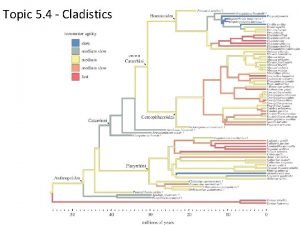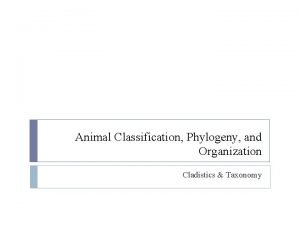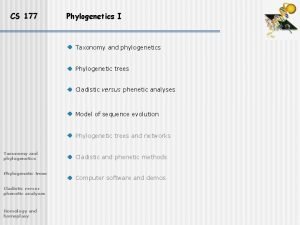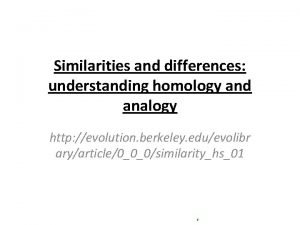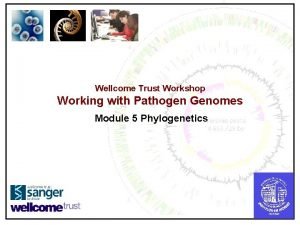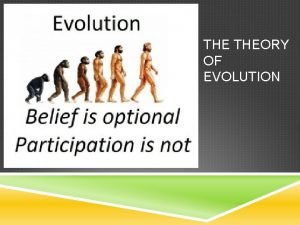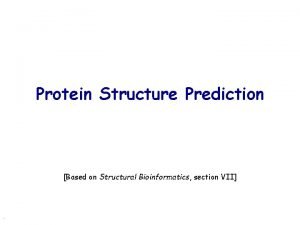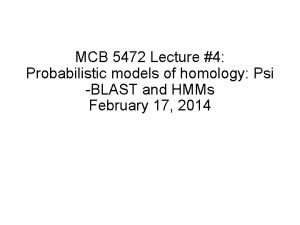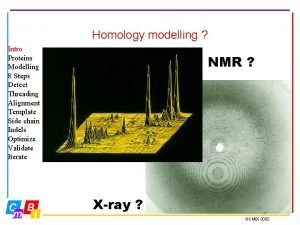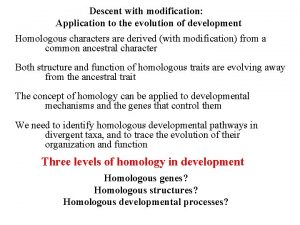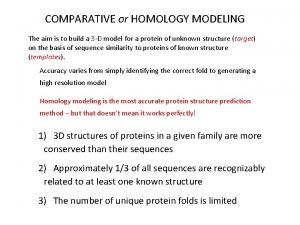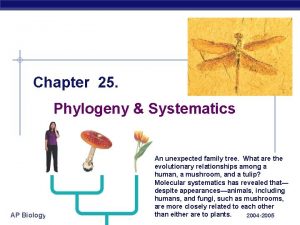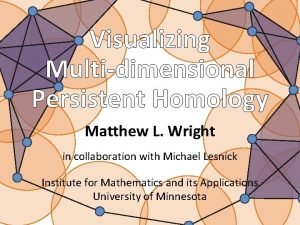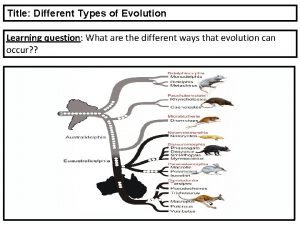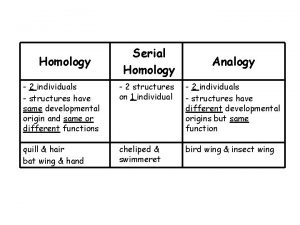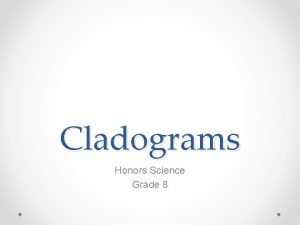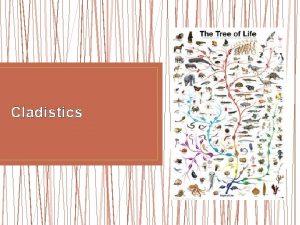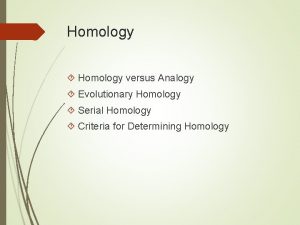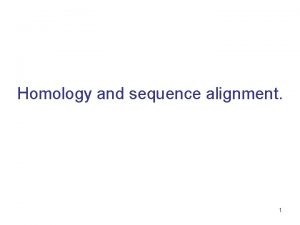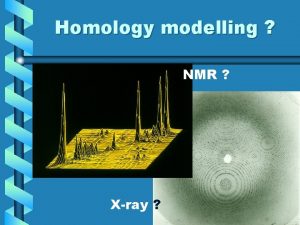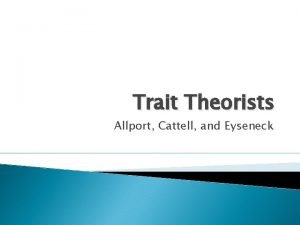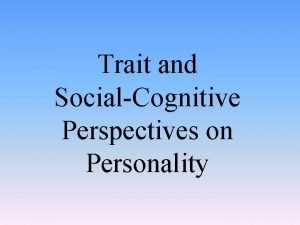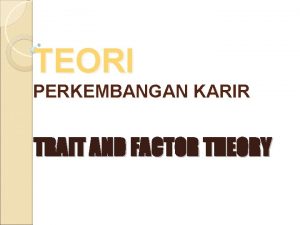Homology and Cladistics Homology Homology a shared trait
















- Slides: 16

Homology and Cladistics

Homology • Homology – a shared trait between organisms from shared ancestry • Use homology to figure out ancestry • Three types 1. Structural 2. Developmental 3. Molecular

Structural Homology • Can also be called morphological homology • Closely related species show similar structures

Developmental Homology • Can also be called embryological homology • Show developmental (embryonic) similarities

Molecular Homology • Also called sequence homology • Similar DNA sequences or amino acid sequences • Example: • Cytochrome c is an important enzyme (protein) for cellular respiration • Differences from human amino acid sequences show closely or distantly related another organism is

How Related Are Two Species? • Which homology do you think is the best factor to use to determine relatedness? • Structural • Developmental • Molecular: changes in DNA, RNA, and protein sequences can be compared better than structural or developmental changes


Making the Tree of Life • Phylogenetic tree (or cladogram) – visual representation of evolutionary relationships

Cladistics and Cladograms • Making a cladogram uses only shared, derived traits • Shared traits are shown on the cladogram

Cladistics and Cladograms • Ancestral trait – belongs to everyone in the group • Derived trait – new trait that appears on the tree • Shared trait – a trait that multiple organisms on the tree have • So, a shared derived trait is one that appeared and descendants of that organism now all have that trait Derived trait Ancestral trait

Backbone Shark Bullfrog Kangaroo Human Two pairs of limbs Mammary glands Placenta

Ancestral trait Backbone Two pairs of limbs Mammary glands Shark Bullfrog Kangaroo Human Shark Bullfrog Placenta Kangaroo Human Placenta Mammary glands Two pairs of limbs Backbone

Cells Slug Catfish Frog Tiger Human Backbone Legs Hair Opposable Thumbs

Cells Backbone Legs Hair Slug Catfish Frog Tiger Human Slug Catfish Frog Opposable Thumbs Human Tiger Opposable thumbs Hair Legs Backbone Cells

Dichotomous Key

 Homologous analogous
Homologous analogous Construct a cladogram worksheet answers
Construct a cladogram worksheet answers Symplesiomorphy vs synapomorphy
Symplesiomorphy vs synapomorphy Rooted scaled tree
Rooted scaled tree Octopus sea star and grasshopper analogous or homologous
Octopus sea star and grasshopper analogous or homologous Homology vs homoplasy
Homology vs homoplasy What does the theory of evolution state
What does the theory of evolution state Energy based model
Energy based model Probability by homology
Probability by homology Homology modelling steps
Homology modelling steps Developmental homology
Developmental homology Homology modelling steps
Homology modelling steps Analogy vs homology
Analogy vs homology Homology
Homology Derived homology
Derived homology Types of evolution
Types of evolution Cirripedia
Cirripedia
